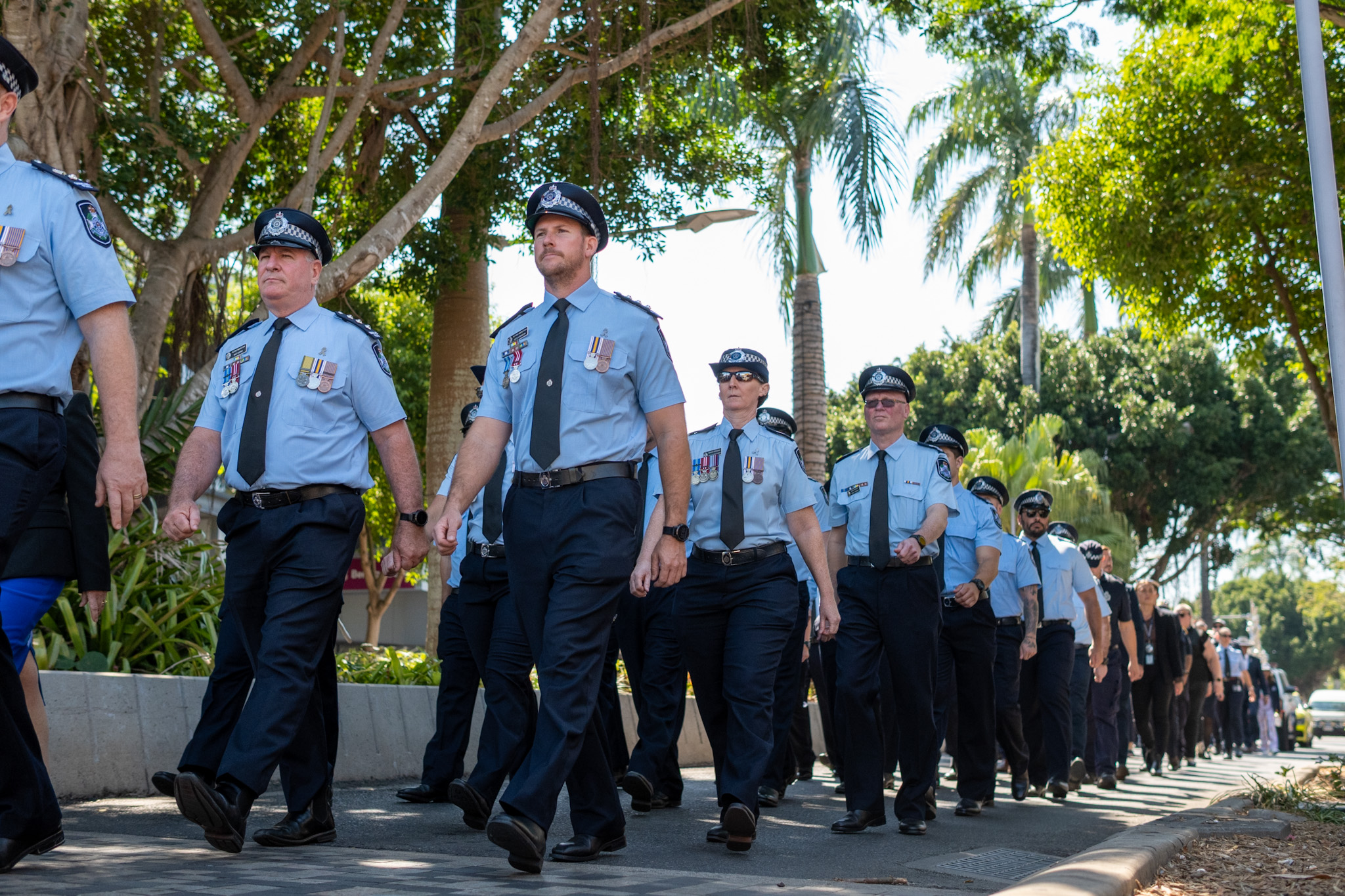
Mackay Reflects On National Police Remembrance Day By Hannah McNamara Mackay paused in quiet respect as police officers, past and present, marched through the city in a heartfelt tribute to colleagues who lost their lives in service. On Monday, 29 September, the streets from Brisbane Street to St Patrick’s Catholic Church were filled with the steady presence of the blue family, joined by friends, families, and community members from across the region, marking National Police Remembrance Day. Ea
Read the full story.jpeg)
Hi lovely readers, Can you believe it’s October already? Cue all the Christmas fanatics cheering and unpacking their boxes of decorations, ready to adorn their homes early! My mum is one of those early Christmas fans – but I love her for it (lol). It’s been a busy week, with an even bigger month ahead, with plenty of fun activities and community events on the calendar. You might just spot me with my camera at this Saturday’s Mackay Family Carnival… so get ready to say cheese! On another
Read the full story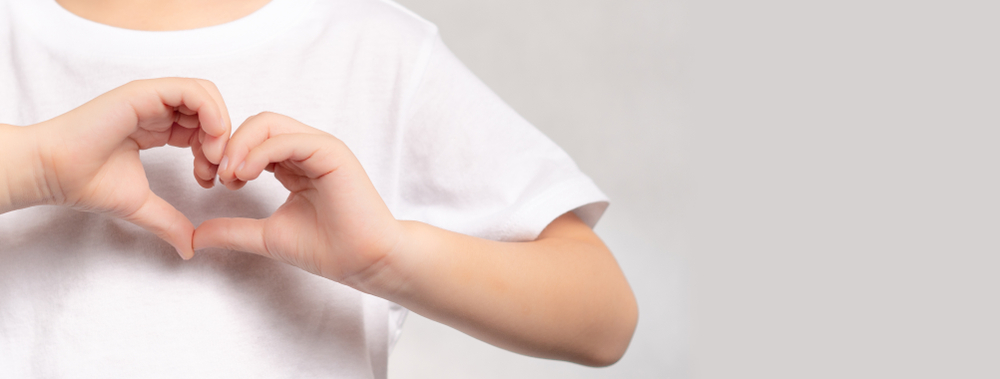
A Mother’s Heartfelt Thank You To Caring Kids A simple act of kindness at a local play centre has touched the heart of a Mackay mother, who has praised a group of young girls and their parents for showing compassion and inclusion toward her daughter. Posting to a local community page, the mother shared how her 12-year-old daughter, who has an intellectual disability, was warmly welcomed by other children while visiting the Kidz Life Play Centre with her carer. “Unfortunately, I wasn’t
Read the full story
Queensland University of Technology (QUT) has unveiled an $18 million transformation of its Mackay-based Pioneer BioPilot, now Australia’s leading pilot-scale fermentation facility. Backed by federal and state funding and linked with the Food and Beverage Accelerator (FaBA), the upgrade positions Mackay at the heart of Queensland’s push to become an Asia-Pacific biomanufacturing hub. Senator Corinne Mulholland said, “This investment positions Australia as a serious player in the global bi
Read the full story
You may have heard of bodybuilders and dieters counting their macronutrients, but what does that mean and should you be doing it, too?
Macronutrients, often shortened to macros, are the nutrients that your body requires in large amounts.
You’re almost definitely already familiar with the three macronutrients: carbohydrates, protein and fat.
Other familiar nutrients include fibre, vitamins or minerals such as potassium and calcium. These are considered micronutrients that your body still needs but in smaller doses.
The amount of protein, carbohydrates and fat you should eat every day varies from person to person.
Factors like gender, body size, body weight and fitness or weight goals all influence how much of each macro you should aim to eat, but here’s a rough guide.
Keep in mind, each macronutrient is measured in grams but the calories per gram of each macronutrient aren’t the same: protein and carbohydrates have four calories for every gram while fat has nine calories for every gram.
Protein
Aim for 10% to 35% of calories from protein each day.
That's 200 to 700 calories or 50 to 175 grams per day for a 2,000-calorie diet.
Protein is important because it's the main structural component of all of the cells in your body and is needed to build cells and repair them, among other key body processes.
Carbohydrate
The largest portion of your diet is dedicated to carbs.
The recommendation is to get 45% to 65% of daily calories from carbs.
That's 900 to 1300 calories or 225 to 325 grams per day for a 2,000-calorie diet.
Your body prefers carbohydrates and likes to use them as a primary energy source - especially your brain.
Fat
20% to 35% of your calories should come from fat each day.
That's 400 to 700 calories or 44 to 78 grams per day for a 2,000-calorie diet.
Saturated fats (the less healthy fat found mostly in animal meats and full-fat dairy), however, should be limited to less than 10% of calories
So where does one find these macros in the grocery store?
Meat, eggs, fish and seafood, dairy, legumes such as lentils and beans, whole grains, nuts and seeds are all high in protein.
You’ll find carbs in grains, fruits, dairy, legumes and starchy vegetables.
Foods high in fat include oils, butter, nuts, avocado and fatty fish like salmon and tuna.
Counting macros can be a more flexible and healthy way of eating and a sure-fire way to get your essential nutrients.
This week in our nutrition feature, we take a look at what macronutrients are
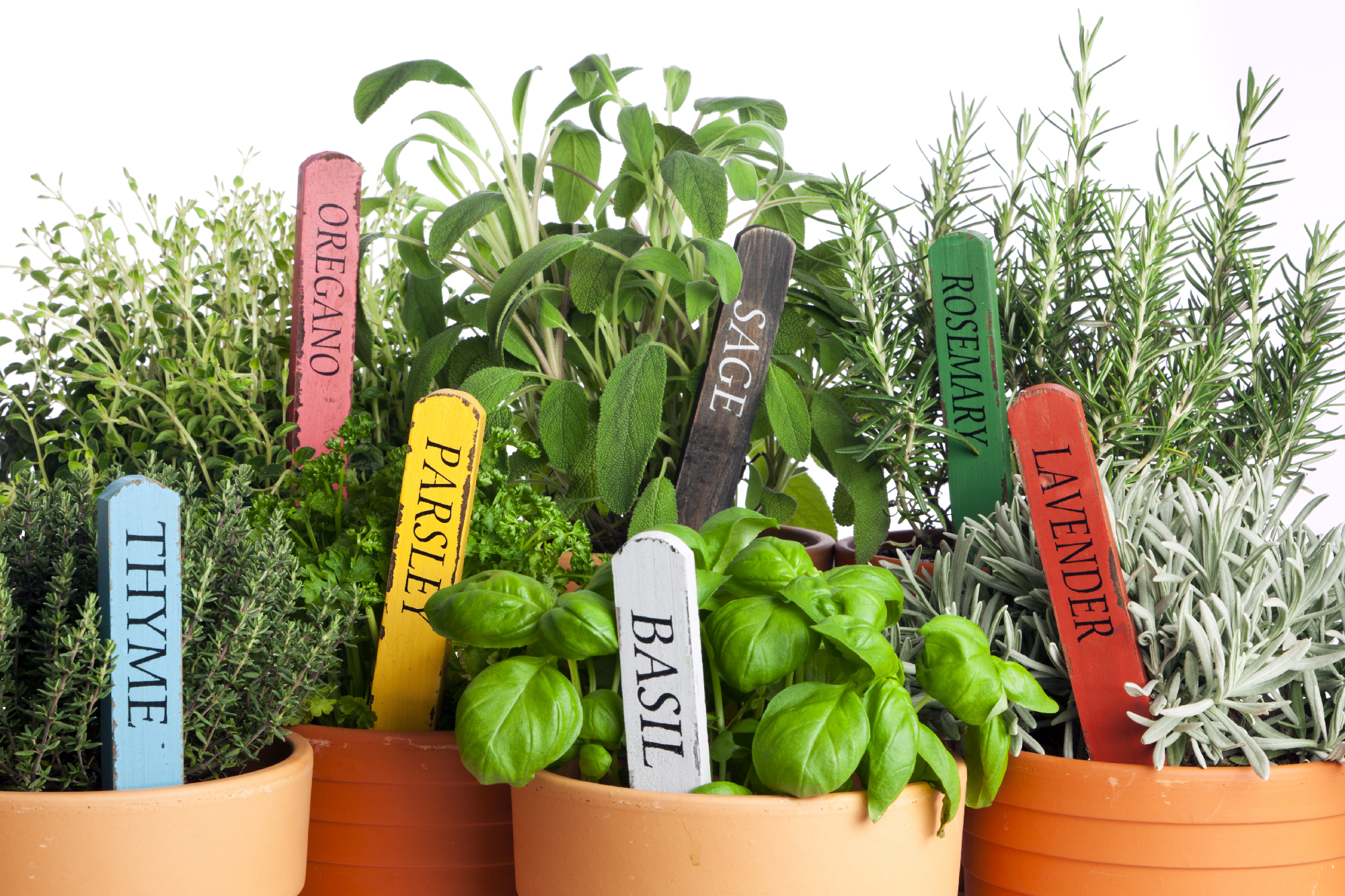
There is nothing better than freshly picked herbs from your garden added to your meal.
Not only do they enhance the flavour of your meal, it is very rewarding picking them out of your vegie garden / pot and grabbing only what you need (have you ever thrown out the wilting remains of the bunch of herbs you “paid for” last week) and not having to run down the street and pull out the credit card. Actually, if I had to do that, I wouldn’t bother and the meal would suffer for it! And… so would the experience of preparing food for the people I care about (and myself!).
But herbs offer a whole lot more then just flavour (although that would have been enough for me). There are over 40,000 plant species used in traditional medicine today! From anti-oxidants, anti-inflammatory to relief from sunburn. Have you ever seen an English tourist (before Covid) white as a ghost, lying half naked on Airlie Beach foreshore and been tempted to put a pot of Aloe Vera beside them, knowing that they are really going to appreciate it at about 6pm that night!
NOTE: To treat sunburn, spread a layer of pure gel extracted from the inside of an aloe vera leaf over sun burnt skin.
Herbs you can grow in your garden in the Whitsundays for medicinal purposes include:
Dill – Great for abdominal discomfort (I eat this every morning as I water)
Eucalyptus – For infections
Ginger – If you are a boatie you already know this one! – “nausea”
Rosemary – Memory (I need to eat more of this) & circulation
MUST GROW HERBS IN THE WHITSUNDAYS:
Basil, Chillies, Chives, Coriander, Parsley, Ginger, Lemon Grass, Turmeric and Mint just to name a few.
Indigenous Australians use Myrtles for healing and wellbeing. Plant a Lemon Myrtle today!
If you have the space, then planting herbs in the garden is a great option but be mindful, in the Whitsundays we have hot, wet & humid conditions in the summer, so plant in raised beds for drainage and we have frost free conditions in the dry season, so read your seed packet and know what to plant in which months in the tropics and water regularly in the dry season (which is now – even if it is a little wetter then usual).
If you don’t have the space or don’t have a garden at all! Then herbs are a fantastic pot option either on a veranda or a windowsill. Plants indoors are not subjected to the same bugs and natural climate changes as plants in a garden BUT they also don’t have than advantage of a deep soil reservoir (nutrients/water). They are totally dependent on you.
What does that mean? Three things: Water / Food / Light
Water regularly and feed often (liquid fertilise with Seasol), and make sure they get enough light by a windowsill. Herbs give back 10 fold. They give you flavour, good health and a daily ritual that is good for everyone’s wellbeing.
Gardens heal. Coriander anyone?

It was a bit daunting going for a first colonic, considering that – for the entirety of my life – my bowels have been a one-way street.
For those not in the know, a colonic is a procedure where water is infused into the colon to flush out toxins and built-up collected plaque.
Bottoms Up Whitsundays owner Selena Daly explained to me that a colonic was akin to teeth cleaning, but for your colon.
“Colon cleansing can have widespread health benefits. The toxins that gather in your colon can cause a variety of health problems.”
Although not major issues, I ticked the boxes of bloating and irregular bowel movements on the New Client form. Upon discussion of these symptoms with Selena my mind was put at ease as she explained, these are extremely common with certain dietary patterns (thanks, coffee).
The Colonic
Selena talked me through the process and eased my anxiety about the procedure: a roughly one-hour session, beginning with the speculum being inserted into where the sun don’t shine. Albeit not that far up the track, I got over the initial discomfort after we repositioned onto my back where I relaxed and let the good times flow.
The colon hydrotherapy unit was turned on and warm, filtered water flowed and filled the different parts of my colon. I viewed it on the screen in front of me and it proved a better watch than New South Wales’ performance in the Origin decider.
I watched as toxins and faecal matter, which had built up, flushed away. As the saying goes: better out than in.
Once you get over the idea, you really do feel a sense of a deep clean taking place.
The Results
Over the first few days, physically, I felt lighter, more mobile. Selena told me that colonics can increase your overall energy levels. I had ticked off my gym work and soccer training without a second thought.
A colon working inefficiently, blocked by excess waste, can make you feel tired and sluggish – feelings that dissipate after you participate in a colonic. This was true for me – I felt as though I was working at a higher capacity; like I was less full of sh*t than normal.
I can tell multiple colonics would improve other facets of my life. Although I underwent this process with no major symptoms, I would highly recommend it for anyone wanting to freshen up, increase energy levels or looking for new ways to clear your headspace.
Michael McCann

The Bowen Historical Society has celebrated the Indigenous history of the Whitsundays northernmost point this week through the museum’s Aboriginal displays.
The year-round displays have themselves a long history at the museum, having been originally transferred from the Bowen School of Arts – they include historical artifacts such as weaponry like cudgels, reed bags, tools, and even metal medallions.
The section pays homage to the Juru, Bowen’s traditional owners who hold title for the land northwards from Bowen to the Burdekin River, near to Home Hill.
Much of the history at the museum focuses on the Juru people and their relationship to figures like Bowen’s early day pastoralists and colonialists like Captain Henry Daniel Sinclair.
Sinclair, along with George Elphinstone Dalrymple, are in the section adjacent to the Aboriginal one, and Bowen Museum’s Alan Jurgens said they would love to expand both sections.
“We have some good displays on Bowen’s Aboriginal past and some really thorough ones on the port of Bowen’s founders, but we’d love more,” he said.
“There’s much more history that the Indigenous lived before we arrived, and I think the museum would benefit, as well as Bowen, from learning more about it.”
The Bowen region was widely inhabited by the Juru at the time of Sinclair and Dalrymple – but the history of its pastoralists, like much of Australia, is unfortunately tethered with bigotry and genocide.
“It is a history we can’t hide from. It must be told, and to do so we need volunteers and donations,” Mr Jurgens said.
Bowen Museum is open 9.30am to 12.30pm, Monday to Friday.
Bowen Museum volunteer Alan Jurgens in the museum’s aboriginal section

It was a very happy birthday for the Mackay Regional Botanic Gardens thanks to a sizeable donation from the Mackay Regional Botanic Gardens Friends Association (MRBG Friends).
MRBG Friends President Maya Harrison presented the Gardens with a cheque for $10,000 to contribute to the purchase of database software.
Gardens Curator Lisa Kermode thanked MRBG Friends for their donation, saying IrisBG Software has been specifically designed for botanic gardens and is used all over the world.
“It’ll be a really great tool for us to manage and record all the plants in our living collection,” she said.
“It’ll record information like the species, where they’re located, the history and origin of that particular plant.
“We’ll also be able to display that information on some maps and that will be available to the public and also to botanic gardens across the world to find out about our collection.”
Mackay Regional Council Mayor Greg Williamson said the significant contribution brings the Gardens into the 21st century.
“Without interest by ‘friends’ groups in our community, we wouldn’t be a community,” he said.
“This database will certainly revolutionise the way we do business as the botanic gardens.”
The Mackay Regional Botanic Gardens were opened on May 24, 2003 and celebrated their 19th birthday last week.
MRBG Friends President Maya Harrison says the association raises funds year-round through the garden shop, community events and fundraising to assist the Gardens and save for such donations.
“The friends of the gardens have been involved in the gardens since before they even opened,” she said.
“The garden friends have basically planted most of what you see here in the gardens as tubestock.
“The Botanic Gardens is really showcasing our regional plants.”
These days, MRGB Friends are involved in planting, weeding and feeding throughout the Gardens as well as leading guided tours and social events.
Last Saturday, MRGB Friends made their next significant contribution to the Gardens, planting 1000 Golden Everlasting Daisies (xerochrysum bracteatum) on the lagoon’s edge.
MRGB Friends have had to reschedule the annual planting twice this year but there was not a cloud in the sky this time around.
“It’s quite spectacular when they’re all flowering and hopefully they don’t get buffeted by wind and rain and stay upright,” said Ms Harrison.
Botanical Art Interest Group
Another branch of the MRGB Friends is the Botanical Gardens Interest Group which is currently running its latest exhibition ‘Where A Plant Begins’.
Similar to the old conundrum of ‘the chicken or the egg,’ the exhibition ponders whether seed or flower came first.
Botanical artists have focused on a particular aspect of the plant’s lifecycle – flowers, pollination, seeds, germination or seedlings using photosynthesis – or they have portrayed the entire lifecycle of a plant complete with flowers, seeds and features of their chosen plants.
Combining detail, accuracy and artistry, the botanical artists have committed many hours to each graphite drawing, pastel drawing, watercolour or acrylic painting.
Each piece showcases how the artists take live specimens and create a living piece of botanical art via their sketch books, photos and art materials.
‘Where a Plant Begins’ is available for viewing at the Lagoons Gallery within the Botanic Gardens Café and is open 9:00am to 2:00pm Wednesday to Friday and 11:00am to 1:00pm on weekends until Sunday, June 26.
For more information on the Mackay Regional Botanic Gardens Friends Association, the exhibition or any other initiatives, contact Maya Harrison on 0436 331 009 or email mackayrbgfriends@gmail.com.
Mackay Regional Council Mayor Greg Williamson, MRGB Curator Lisa Kermode, Mackay Regional Council Regional Services Coordinator Ross Willis, MRGB Friends President Maya Harrison, and MRGB Friends Penny McMahon, Kevin Jackson, Julie Inkson, Meryl Ritchie and Carolyn Atkinson. Photo credit: Sam Gillespie
MRBG Friends planted 1000 Golden Everlasting Daisies on the banks of the lagoon last Saturday
‘Where a Plant Begins’ is available for viewing at the Lagoons Gallery within the Botanic Gardens Café
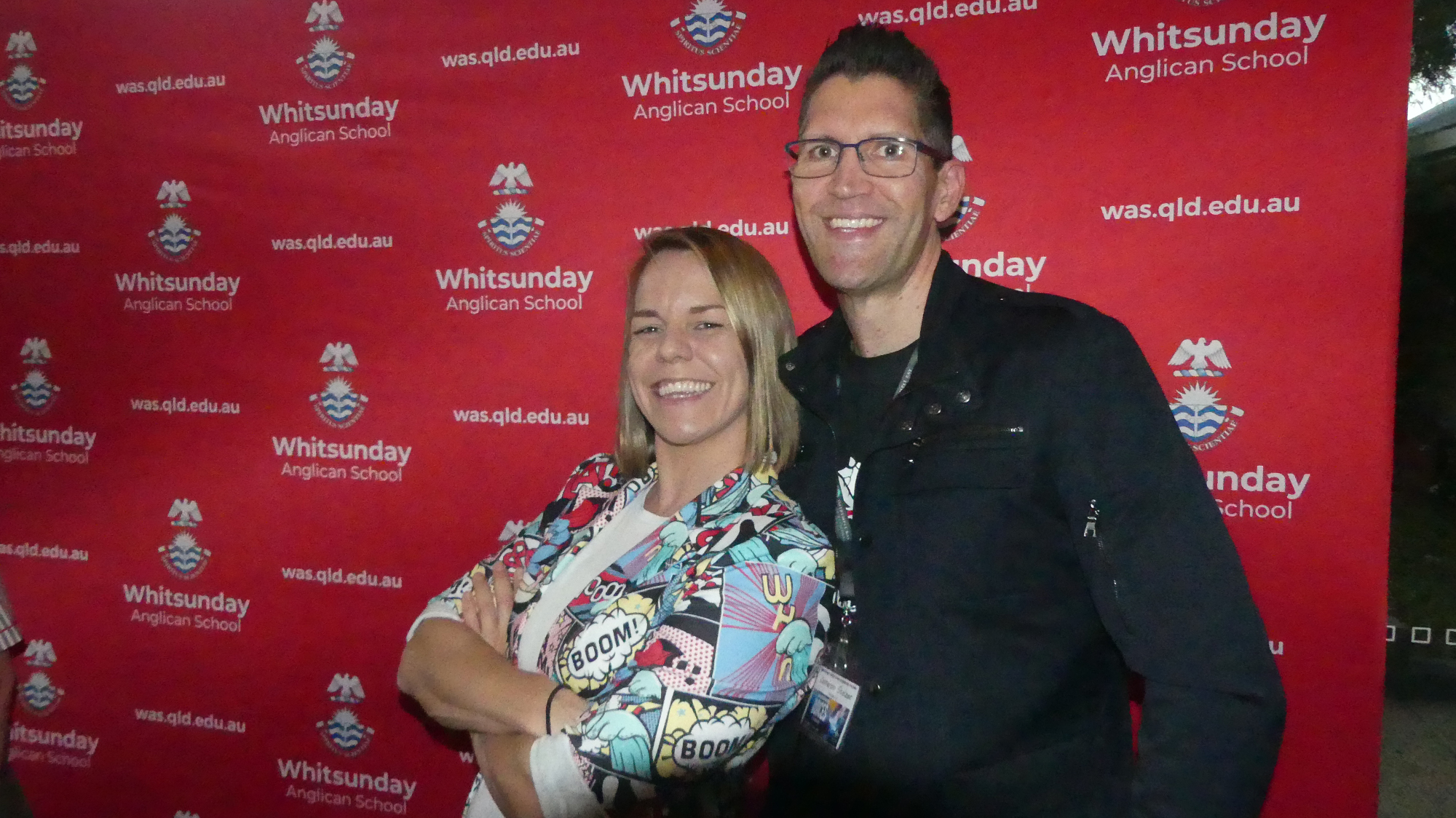
The Whitsunday Voices Youth Literature Festival kicks off its 18th year today after launching at Whitsunday Anglican School last night.
Presenters at the festival, including authors, artists, storytellers, screenwriters, slam poets, musicians and scientists, as well as students, sponsors and organisers gathered to officially launch the festival.
Over the next two days, more than 5000 students from the Mackay, Isaac and Whitsunday regions and 500 students from 21 schools in rural and remote regions thanks to the Winchester Foundation will be immersed in all things literature.
“The great part of why I love this festival is that it provides an opportunity for regional and rural students to experience a world-class literature festival that they normally wouldn’t get a chance to outside major capital cities,” said Whitsunday Anglican School Principal Andrew Wheaton.
“The students walk away tremendously invigorated and excited with a love of literature.
“You start to see students walking with piles of books and they literally can’t wait to turn the physical page of a book and get immersed in the wonderful world of what literature can provide and that’s incredibly powerful in an age which is so dominated by social media and technology.”
Mr Wheaton says the festival has come together thanks to incredible preparation from Festival Manager Tracey Gurdler and Coordinator Liz Russel.
Ms Gurdler says seeing the authors arrive and interact with students and stakeholders makes it all worthwhile.
“Liz and I have been working hard to deliver a festival to excite and encourage the students of Mackay into the world of literature and with this stellar line-up of presenters before us, I feel we have certainly delivered on that,” she said.
“To see children immerse themselves in the joy of literature, reading and writing is incredibly meaningful.
“For me, this is what the festival is truly about.”
Two presenters at the festival include Sydney-based writer and kidlit podcast host Nat Amoore and Queensland author, illustrator and ‘Story Doctor’ Dr Cameron Stelzer.
Ms Amoore says as well as writing and illustrating, festivals are a big part of the job.
“Getting in front of the kids, they’re your audience, they’re your readers so you want to go out and see them,” she said.
“It’s as much about interacting with your audience and getting face-to-face time with the kids that are reading your books as well as keeping them inspired and excited about reading so there’s another generation of writers but also a generation that wants to read.”
“It’s where you get your ideas from as well,” added Dr Stelzer.
“If you’re sitting in a room not interacting, you don’t get the feel of what’s going to work and what the kids want to see.”
After a smoking ceremony and Welcome to Country led by local Yuwi people, the festival was declared open by Principal Wheaton.
An insightful Writer’s Panel followed featuring presenters Melina Marchetta, Jack Heath, Cath Moore and Oliver Phommavanh, hosted by Nat Amoore.
The festival kicks off today with presentations, workshops, competitions and book signings.
Key highlights of the program include the Litchat Educators’ Event presented by Tomorrow, When the War Began author John Marsden tonight and the Flor-Hanly Literary Dinner featuring keynote speaker Dr Richard Harris tomorrow night.
For more information on the festival, the program and the presenters, visit www.whitsundayvoices.com.au.
Nat Amoore and Dr Cameron Stelzer are among the many talented writers presenting at this year’s Whitsunday Voices Youth Literature Festival
Last night’s launch concluded with an insightful Writer’s Panel featuring Melina Marchetta, Jack Heath, Cath Moore and Oliver Phommavanh, hosted by Nat Amoore
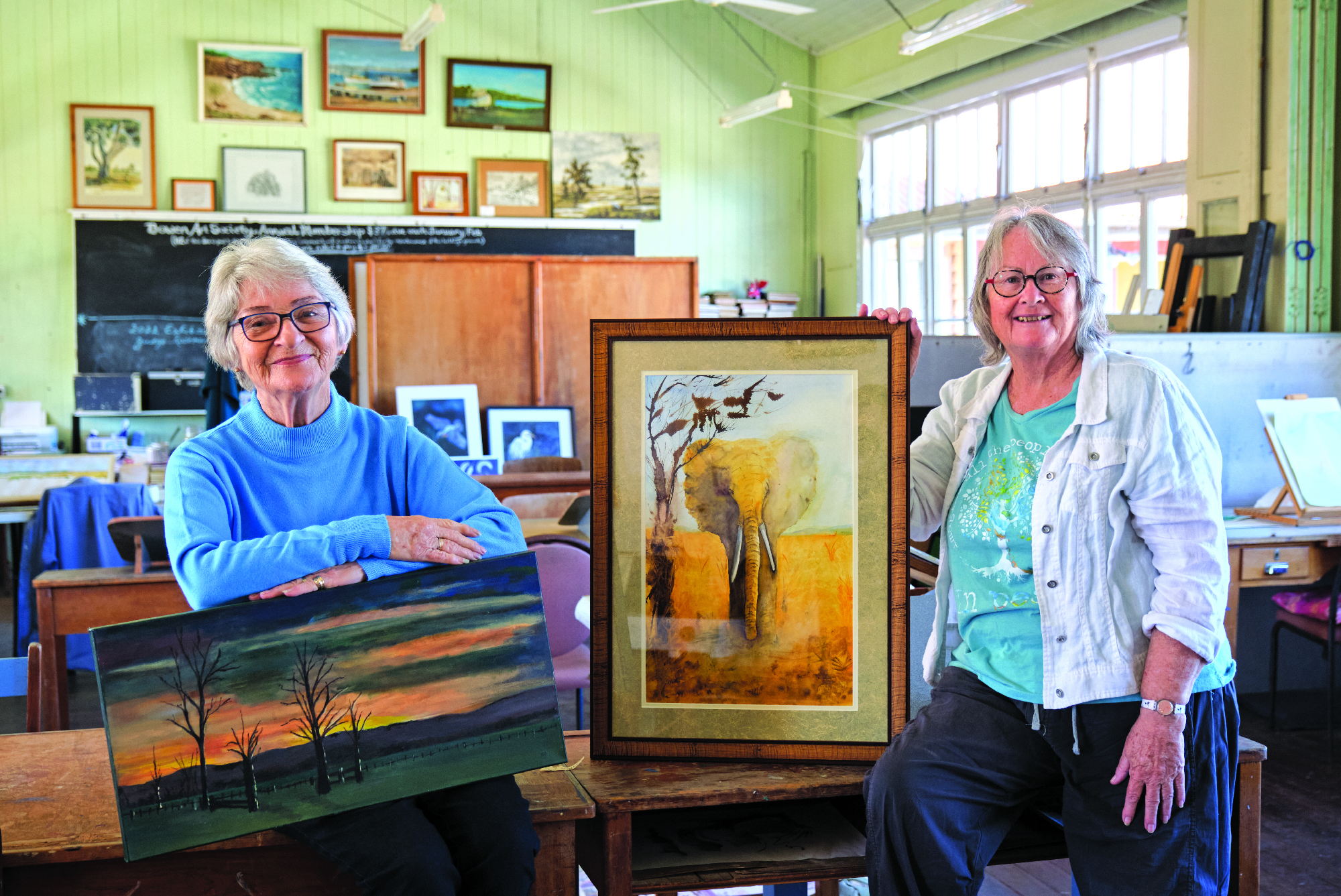
A Bowen-based group of art enthusiasts are eagerly preparing for their next exhibition at the Community Hall on the corner of William and Leichardt Streets next weekend.
The Bowen Art society has been collating its collection of local paintings for the last year, much of which was painted at their studio in Archer Street.
This year will be the society’s 61st exhibition.
Over three days from July 31 to August 2, the exhibition will be judged by artist Rosemary Payne, a local who studied at the Birmingham College of Art and the Southampton University in the U.K.
Ms Payne has taught at Mackay Tafe, and is currently teaching at Art Space Mackay. She has won numerous awards and prizes for her painting and teaching skills.
President of Bowen Art Society, Margaret Gaul, said the group has been steadily planning the event for the past month, as well as creating the artwork for display.
“The studio is always packed this time of year with our southern members coming up; it’s such a beautiful place to paint,” Ms Gaul said.
“We’re quite spoilt for wonderful artists here in Bowen and the exhibition reflects that. We’ve been dithering away getting it all prepared and we’re quite excited – this will be my first exhibition as President.”
Ms Gaul said the Society’s Secretary, Judith Potts, was in charge of the exhibition this year, and that there was an excellent range of water colours, pastels, oils and acrylics being displayed at the event.
“It will be quite the show,” she said.
The Society meets every Wednesday at their studio on Archer Street, a building that has almost as much of a storied history as the group itself.
Once the first Queens Beech State School, the old, wooden building has now become home to Bowen artists.
“We’re very lucky to have a building like this, and I think all of the Society’s members know that,” Ms Gaul said.
“That, combined with our artists, is why this group produces some incredible work. To watch them progress during the year is something very magical.”
At the Society’s exhibition in late July, artwork will be sold, as well as prizes and awards distributed to some of Bowen’s creative crop.
Ms Gaul said if anyone would like to join the Bowen Art Society, they should enquire at their premises at 18 Archer Street on Wednesdays when they host studio sessions.
When: Saturday, July 30 3.00pm to Tuesday, August 2 9.00am to 4.00pm
What: Bowen Art Society Annual Exhibition
Where: Community Hall,
Tickets: $10 on Saturday, Free on Sunday, Monday, Tuesday
Bowen Art Society President Margaret Gaul and Secretary Judith Potts at the society’s studio in Archer Street. Images: Declan Durrant
The society will be displaying work from artists based in Bowen as well as interstate
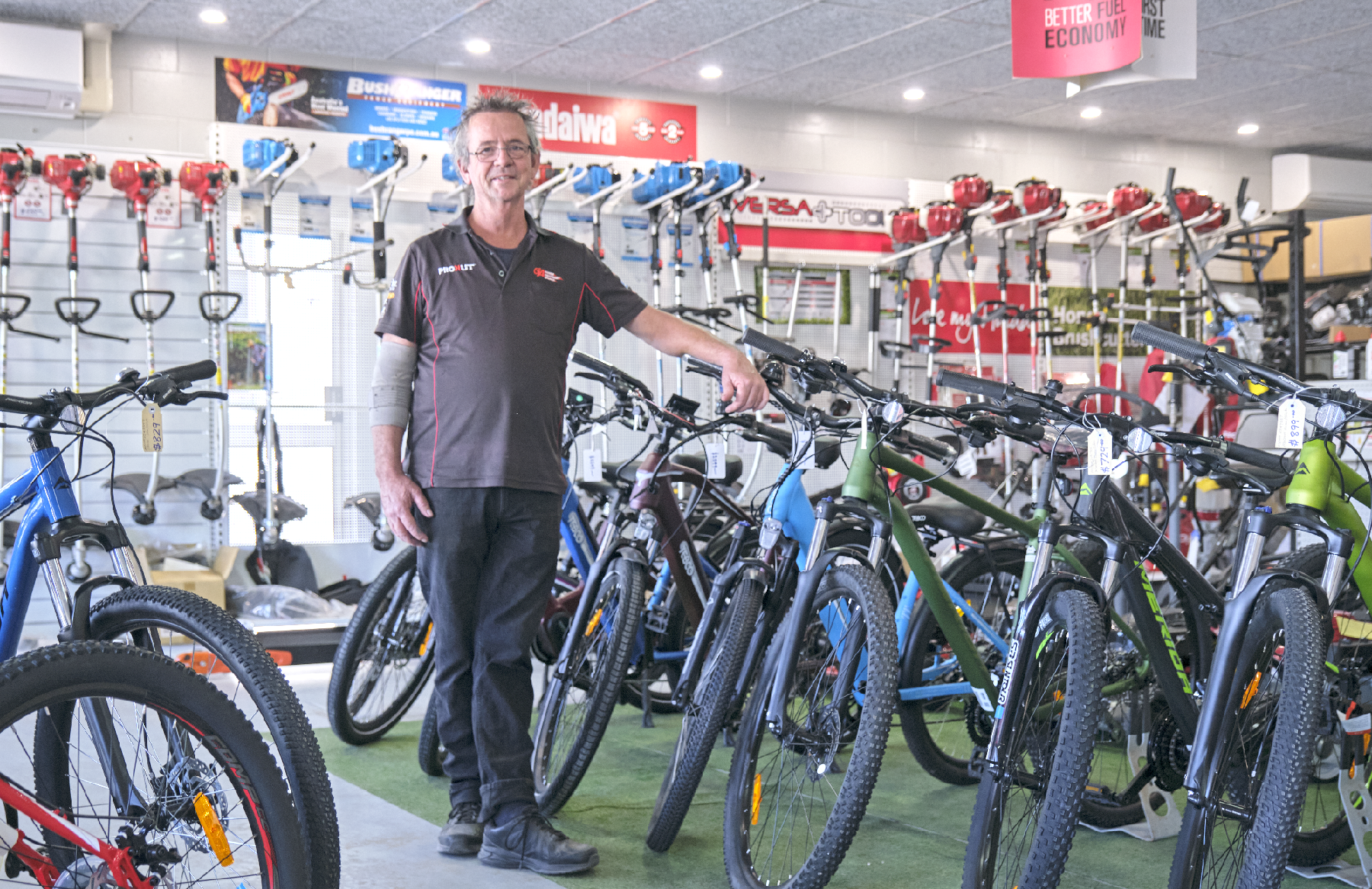
With the price of fuel on a seemingly unending uptick, there’s not been a better time to put on a helmet and re-kindle a favourite pastime than now.
Scott Raisbeck at Bowen Small Motors and Cycles said his store on Williams Street, Bowen – a mechanical-haven for all things garden equipment – is seeing a corresponding uptick in bike sales.
A spike that’s helped by being the only bicycle shop in town.
“It’s becoming very popular again with the price of fuel, and with Bowen such an accessible place for biking it’s really a great time to start riding again,” Scott said.
In what was originally an auxiliary part of the business, the cycle portion of Bowen Small Motors has become a favourite amongst Bowen locals.
Both offering bike repairs and bike sales, they have a range of push and battery bikes: children’s bikes, mountain bikes, racing bikes, and folding bikes – as well as tubes, tyres, and more.
They also have electric bikes which can travel up to 25 kilometres per hour or more, getting around 50 kilometres distance before a recharge.
And, anything they don’t have, they can get specially ordered in.
“We can get anything they want; we have lots of bike fanatics now and we’re really welcoming them at the store,” Scott said.
“It’s nice and flat, the roads are so wide, and it’s great for families – you can buy yourself one and get the kids into it as well.
“Come in and take a look, have a chat, and maybe you’ll end up riding home!”
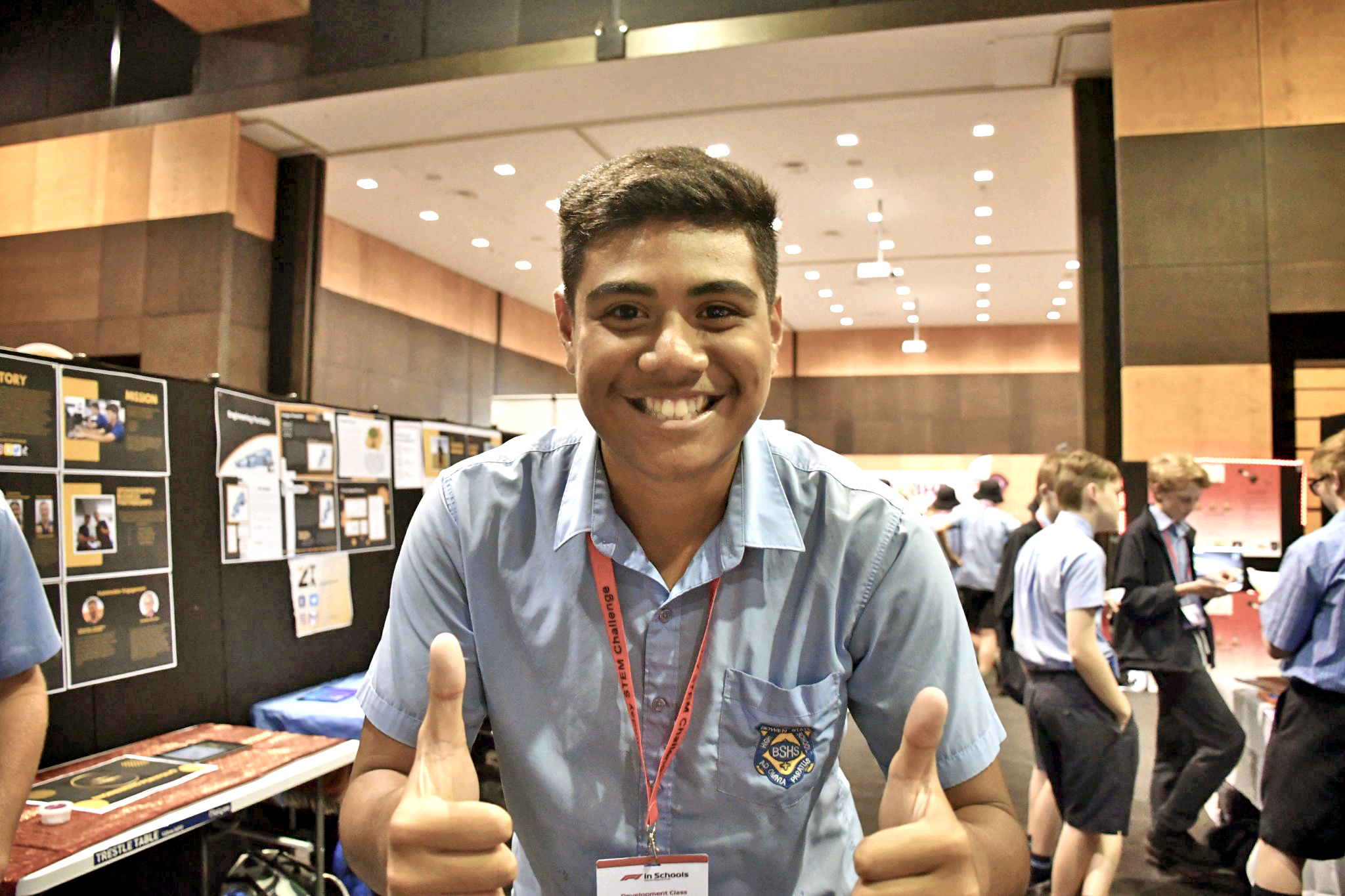
Bowen State High School Year 8 and 9 students travelled to Mackay as part of their F1 Academy Classes, a program which sees them design and race their own miniaturised Formula 1 Race Cars.
The local students have been taking part in the STEM based program over the past year, starting in term 1, and travelled to the F1 in School’s Regional Finals in mid-June.
Teacher Leigh Middleton’s Year 8 class entered a total of eight teams in the Cadet Class, while Mr Kayne Fayolle’s Year 9’s entered six teams in the Development Class.
This is the first time Bowen State High has ever entered the competition.
Mr Fayolle said the program not only gets students working in teams, it also provides them with industry applicable schools, most notably through the use of industry-level programs.
“They use Computer Assisted Design and a CNC Router Machines where anything they’ve designed in the program can be automatically cut, milled or anything like that,” he said.
“In this instance, over the course of Term 1, they were creating cars, collating the data, testing it, and making a better design for competition.”
The F1 competition involves teams designing their own F1 car model with consideration given to Newton’s Laws of Motion, Aerodynamics, weight, friction, and other key principles of physics.
For the grade 9 students, they were also tasked with looking at the business side of F1 – things like team uniforms, business cards, and expenditure.
Mr Fayolle said the students competing in Mackay did exceptionally well.
“It was so pleasant to have so many of our students make it through into state level in Brisbane,” he said.
“We’ll have four teams heading there on October 31 and they’re so pumped about that! The program has already been successful and I think students are getting so much from it.”
Bowen State High School students performed exceptionally at their F1 Academy Classes, which saw them design miniaturised Formula 1 Race Cars
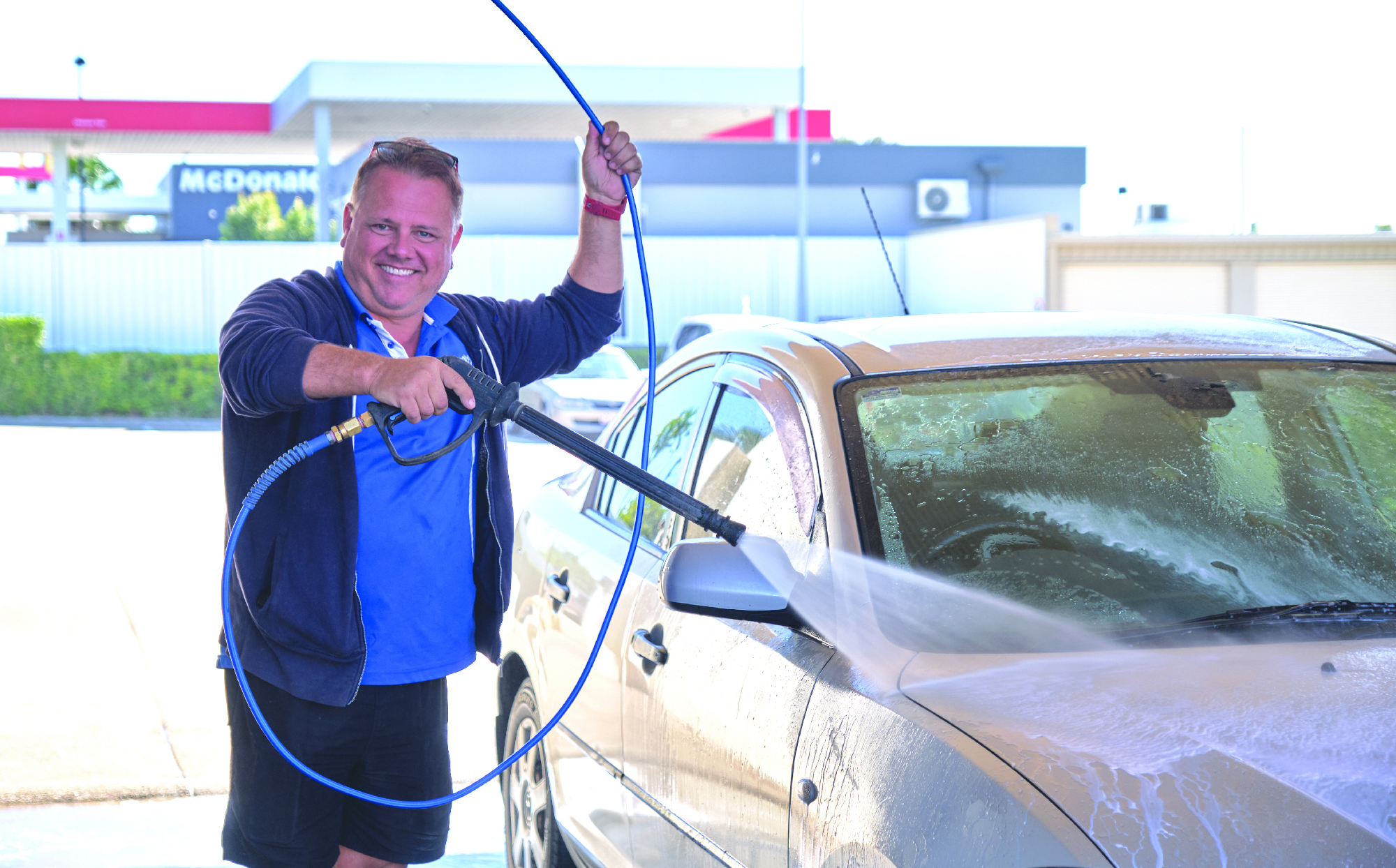
Bowen’s Bubble N Sudds Car and Dog Wash owner Shane Clohesy said you’d be surprised how many people don’t know how to use the self-serve bays at car washes – nor how convenient they are.
“It’s both cheaper than other types of car washes, and, once you get the hang of it, it’s really simple and saves you a lot of time,” Shane said.
So, for those out there a little confused, here’s a quick, three step guide on an easy variation of clean:
1- Pop a coin in the slot and wash away: Press the “wash” or “water” option on the control panel of the main machine and grab the spray pipe. This is for a little ‘pre-clean’ to wash away any muck, as well as put on a light soaping solution mixed with the water. Wash your car’s exterior properly and don’t forget to clean the tyres too.
2- Soap it up: Grab the brush – it looks a lot like a broom – and start applying the soap after you’ve pressed the soap button. This is the most thorough step – really dig in there!
3- Rinse off the soap: Once you’ve soaped your vehicle, it is time to rinse it off. Press the button on the panel and start taking off the soap. This will be a high-pressure wash and should get rid of any bug-splats not caught by the brushing.
And that’s it! Simple, quick, efficient. The self-serve bays at Bubble N Suds can be fast, or they can be a deep-clean where you use some of the brush and sprays other settings like buff, wax, and more!
Give it a go yourself this weekend.
Shane Clohesy using one of the self-serve baysat his business, Bubble N Suds

When Taylor Trewartha was two years old, her family relocated from Adelaide to Airlie Beach chasing the sunshine and blue waters. She’s fundamentally Airlie Beach through and through and is the newest member of the Mackay and Whitsunday Life team, joining as our specialist Graphic Designer.
Taylor has always loved art of all forms. Her most frequented medium is digital design, but she also dabbles in drawing, painting and watercolour when the mood strikes. She entered many art competitions growing up and in 2017 she won the Lady Potter Young Australian Artist of the Year award which saw her travel to Melbourne to present a speech on national TV.
Taylor was a regular at Smart Arts Studio in Cannonvale, where she would take lessons before ultimately being asked to give them. She taught manga lessons and thrived in sharing the skills of her craft. She also worked at McDonalds while she studied her way through a Bachelor of Digital Design at CQU, graduating last year.
Taylor is a gamer, preferring the more intricate, creative indie games over multi-million-dollar Halo-esque epics. She aspires to be a game designer herself, with a vision for telling stories through immersive simulation games. With Virtual Reality becoming more and more prevalent, she hopes to utilise the technology to its fullest.
A lover of animals, Taylor has a conure named Prisma and a border collie named Spirit. These two demand much of her love and affection which she is more than willing to give.
Keep an eye out for Taylor’s creative handiwork every week in Mackay and Whitsunday Life.

Did you know current research suggests 70% of all staff would consider leaving for better work conditions? And that includes your long-term, loyal team-members. Global engagement entities are now teaching us not only how to attract staff but how to REATTRACT your current long-term staff. If you haven’t changed how you engage your workforce by now, they may already have one foot out the door.
1. Flexibility – This is the #1 factor of influence when workers are seeking their new employer. Are you offering flexibility in regards to work hours, workdays, & remote working (work from home)? Many businesses globally have taken on a hybrid workspace where team-members are offered a choice of home & office days to suit both the individual and the business needs.
2. Having a voice – Do you include your team-members in decision-making? Do you ask their opinion on upcoming or current changes? Feeling heard & like we have the capacity to make a difference makes us far more emotionally connected to your brand & your goals.
3. Humancy – Gone are the days of telling your team to “park your emotions at the door”. Workers are looking for a better work/life balance and are putting their family needs before their employers. Include family members in social activities and take an interest in your workers’ families, friends & pets! Showing you care creates a reciprocal effect that results in increased loyalty and longevity in the workplace.
4. Feedback & recognition – Saying ‘thanks’ at the end of the day isn’t enough. Taking time to provide your team-members with an update on how they’ve been performing, and thanking them specifically for a task or job they have just finished shows you value them, you see the difference they make, and you care enough to take time out of your day to show appreciation.
5. Coaching conversations – Most workplaces have discarded the annual ‘performance review’ in favour for quarterly coaching conversations. These are a 2-way conversation which discusses progress, provides 2-way feedback, and motivates through the ‘what’s next for you’ discussion. These discussions are far more positive and no longer include the negativity of opinion-based metrics – which are disputable and unreliable. They provide a confidential and transparent platform for your team-member to have a say in their development as well as give feedback on what they feel they need to succeed.
Contributed by Shiift’s Judy Porter
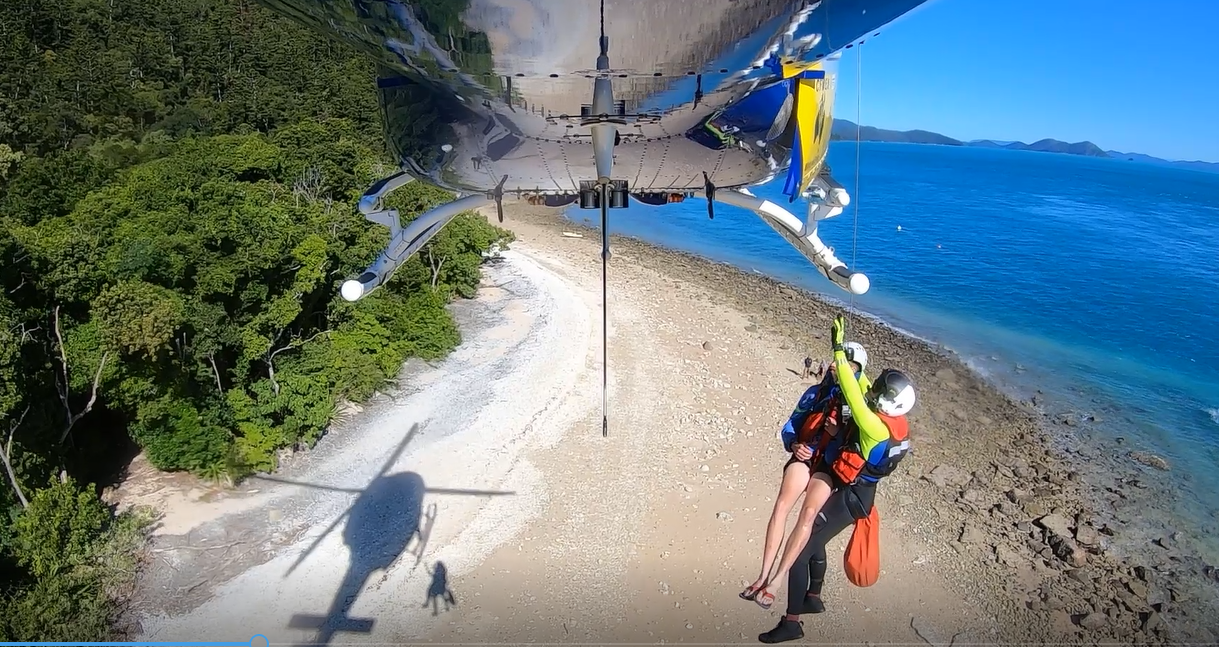
In a three-hour mission, RACQ CQ Rescue winched a person with a serious medical condition off a remote beach on Whitsunday Island last Thursday.
The 31-year-old was travelling on a 13-metre catamaran in Hook Passage just after lunch when they began suffering seizures and required immediate medical evacuation.
RACQ CQ Rescue was tasked by Queensland Health about 1.30pm to retrieve the patient from the vessel located 120km north of Mackay, near Hook Island.
After making radio contact with the boat, a decision was made by the helicopter crew to winch the patient off the rocky shoreline of Cairn Beach, on the northern end of Whitsunday Island.
The ill man was transferred from the catamaran to the beach by tender, accompanied by two others from the vessel.
The Mackay-based helicopter orbited the island before winching the RACQ CQ Rescue rescue crewman down onto the shoreline as the aircraft hovered about 15 metres overhead.
The patient was assessed and secured into an Air Rescue Vest and winched up into the helicopter accompanied by the rescue crewman before receiving further treatment from the doctor onboard.
The winch and safe retrieval of the patient was completed within 20 minutes of arrival on scene. The patient was then flown to Mackay Base Hospital in a stable condition arriving about 3pm.
A31-year-old patient suffering seizures was winched off Cairn Beach onWhitsunday Island yesterday by RACQ CQ Rescue
RACQ CQ Rescue

Over the years since the first lease taken out by D C Gorton in 1883, South Molle Island has witnessed many owners come and go. But the Bauer’s tenure was by far the longest and one of the most successful.
In 1937, when Ernest (Ern) Bauer observed islands for sale in the Whitsundays, he chose South Molle with its north-facing bay and permanent water supply. He wanted to provide a healthy environment for his eight children and figured twenty guests per week would sustain their needs. Since their home was already a focal point for young people to gather socially, there appeared little adjustment necessary.
Ernest took over the lease from Henry Lamond who possessed the island since 1923. The purchase involved a swap of the family’s dairying property in Brisbane with a large furnished family home for the island, livestock, primitive dwelling with no electricity and a pit lavatory. Enter the pioneers: daughter, Ruth, recalled, “My mother cried. We children thought we were in heaven. The water was so blue, clear and warm - nothing could keep us out of it and we became as brown as berries.”
The arrival of the weekly Correspondence School course, however, put an end to their little games. But there was great joy when the electricity generating plant arrived by cargo ship, which also homed their pony, “Star”, who was lowered over the side to swim ashore behind the boat.
While existing resorts had corrugated iron bungalows with coral for the floors, the Queensland Government Tourist Bureau insisted that Ern build fibro cabins with wooden floors before they would be included on the books. These building materials had to be shipped from Brisbane. The cabins and a large central complex of lounge, dining room, kitchen, shop, office and family accommodation were eventually completed, and a slow trickle of guests began to arrive.
Ernest and Anna became far too busy to supervise their children’s schooling, so Anna took a house in Proserpine where the children attended school and went home weekends to help. Ruth especially remembered peeling potatoes around an iron tub as their contribution to the Sunday influx of day visitors who dined on roast dinners, plum pudding, fruit salad and island cream.
The Bauer’s self-sufficiency included home-grown lamb, pork, fresh vegies, milk, cream and butter. Sheep had to be rounded up for shearing, the wool baled in the woolshed and shipped to Dalgetys in Brisbane.
Progress was steady and each year extra cabins were constructed. Guest numbers increased to the extent that shipbuilders had to be commissioned to construct a 72-foot TSMV (named “Crest”) suitable for both cruises and transport. Even with these larger numbers, the Bauers were still able to retain the “family” atmosphere.
When the Pacific War was declared, shelters were dug in the hills and provisions cached there. Since Japanese luggers had called in for water supplies, the family feared they would return. However, the only “invasion” was from army personnel from a camp outside Proserpine and Air Force personnel from Bowen-based Catalinas which landed in the bay on R and R. The Navy’s presence in Cid Harbour and manoeuvres down the passage were a comfort to the family.
Reg Ansett’s purchase and development of Daydream and Hayman Islands heralded the entrance of “Big Business” to the Whitsundays, an area previously operated by family units. But under the Bauer family’s ownership, South Molle remained a “Mecca” for families and young people.
It is indeed sad, today, to see this once popular island languishing.
Story and photo courtesy of Proserpine Historical Museum and recollections from Ruth Dunstan (nee Bauer)
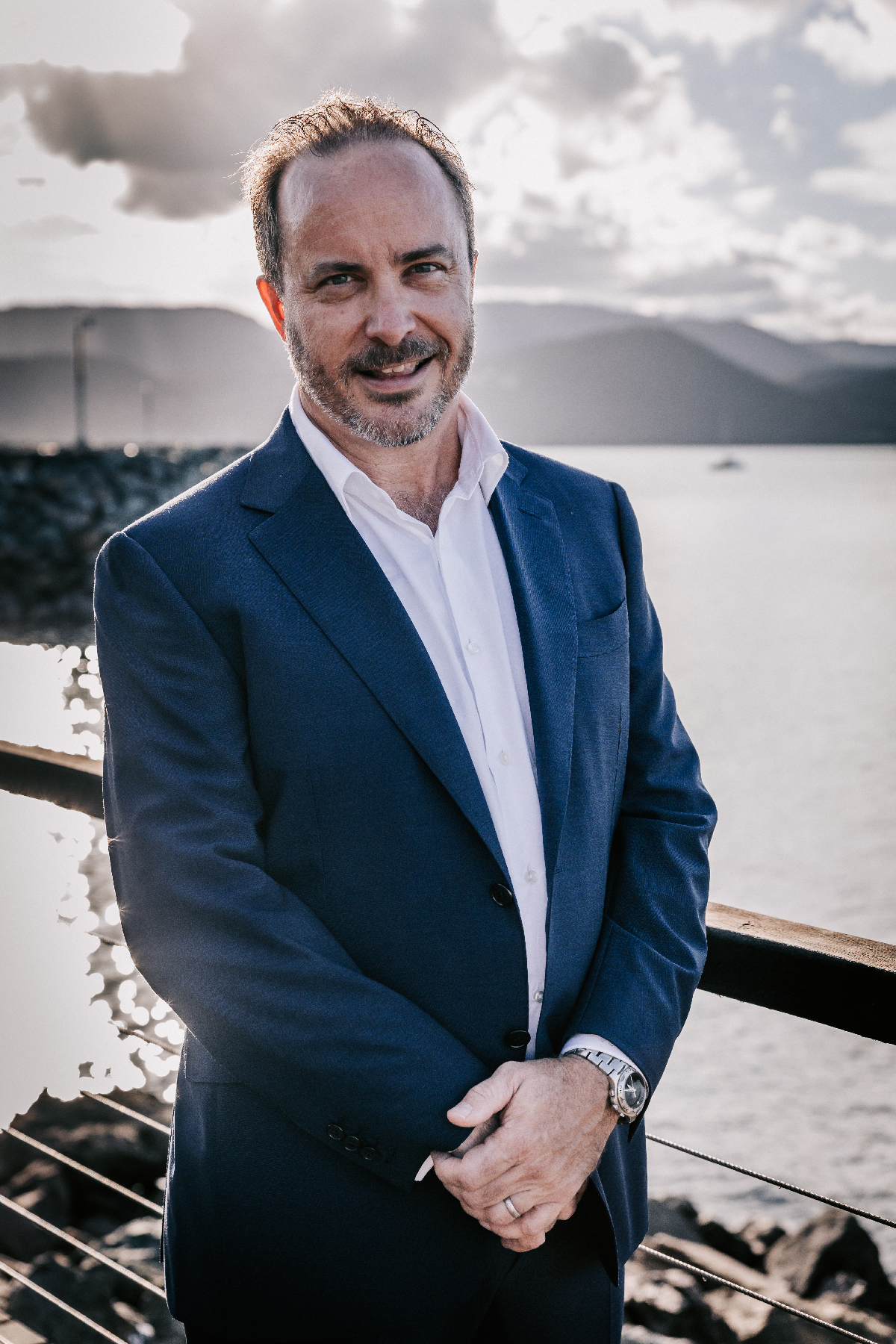
This is a question we get asked all the time.
Statistic – ‘For a couple aged 65 today there is a 50% chance that one person will still be alive at age 95. Source ABS.
A sobering thought when you’re working out much you need in the super and investment nest egg to retire. Generally, people fall into one of two camps when it comes to retirement planning: 1. Those fortunate enough to have built such a large nest egg that it represents up around 20 times their required annual retirement income. I.e., They want $70,000py and have built up over $1.4mill. For these few people, their nest egg will grow throughout retirement as they will only spend a portion of the interest earned; 2. The more common scenario is those whose nest egg represents around 15 times their required income. I.e., They want, say, $60,000 per annum and have around $900,000 built up. This is most people, and they will be gradually eroding their nest egg to meet their income requirements and will eventually run out of money.
The key to good retirement planning is to do all the smart things to maximize your financial position throughout retirement and try and have your money run out when you think you will run out. It is no good running out of money in your early 70’s but it’s also no good scrimping and saving, not enjoying your retirement and having heaps left in your 90’s.
As an example: we recently reviewed a couple’s situation, Jim and Mary (names changed for privacy) decided they wanted $800pw or $41,600py as a pension from their super. This coupled with part Age Pension entitlements of around $26,000py would get them up to $67,000 odd per year income in retirement to cover living, hobbies and travel in today’s terms. We projected they were currently on track to build up around $450,000 in super and investments by their preferred retirement age. As ‘balanced’ investors, expecting 7%pa after fees and costs, this meant their nest egg would run out in around 14 years, after allowing for inflation. As Jim and Mary were 50, and planning on retiring young at 60, they weren’t comfortable with running out at age 74. We implemented strategies to put away an extra $1,000pm tax effectively to ensure they built their nest egg up to over $700,000 which should now provide their required income and last them until age 90.
If you’d like a cost and obligation free review of your retirement projections, give us a call.
Written by Justin Butler, Managing Director Eclipse